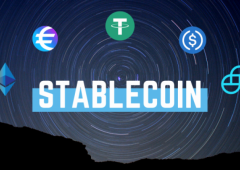Solana Co-Founder Pushes for Cheaper, Unified Data Layer Across Blockchains
14.05.2025 16:00 1 min. read Alexander Stefanov
Solana co-founder Anatoly Yakovenko has unveiled a bold new concept: a meta blockchain layer that would unify data from multiple blockchains into a single, ordered history.
Designed to optimize cost and interoperability, this framework would allow developers to publish transactions on chains like Ethereum, Celestia, or Solana—whichever offers the most affordable data availability at the moment.
Rather than running its own network, the meta layer would rely on transaction references to recent block headers across chains, ensuring consistent sequencing through a shared rule set. Yakovenko says this could simplify development for apps operating across multiple ecosystems and reduce costs for rollups and aggregators.
The idea sparked discussion among developers, some of whom envisioned decentralized archival systems to store blockchain history. Yakovenko, however, emphasized that the focus is on ordering, not storage.
The proposal comes as modular blockchain designs gain traction and Solana maintains strong user metrics, recently leading all public chains with over 24 million active addresses. Yakovenko argues that flexibility at the protocol level is key, warning that if Layer 1s constrain innovation, developers will move elsewhere.
-
1
Chainlink Partners With Westpac and Imperium to Tokenize Finance in Australia
17.07.2025 21:00 1 min. read -
2
Solana Plans 66% Block Upgrade to Boost Network Capacity
24.07.2025 20:40 2 min. read -
3
Vietnam Launches National Blockchain to Digitize Government and Citizen Services
25.07.2025 16:36 2 min. read -
4
Wall Street Moves Onchain: Tokenized Finance Enters its Breakout Era
25.07.2025 18:32 2 min. read -
5
Top 10 AI and Big Data Crypto Projects by Development Activity
01.07.2025 19:00 2 min. read
Wall Street Moves Onchain: Tokenized Finance Enters its Breakout Era
The tokenization of real-world assets (RWAs) has entered a new phase in 2025—no longer a concept, but a confirmed trajectory.
Vietnam Launches National Blockchain to Digitize Government and Citizen Services
Vietnam has officially launched NDAChain, a national blockchain infrastructure designed to underpin its digital transformation strategy.
Solana Plans 66% Block Upgrade to Boost Network Capacity
Solana developers have introduced a new proposal aimed at pushing the network’s performance even further.
Chainlink Partners With Westpac and Imperium to Tokenize Finance in Australia
Chainlink has announced a major institutional partnership with Westpac Institutional Bank and Imperium Markets as part of Project Acacia—a joint initiative involving the Reserve Bank of Australia and the Digital Finance Cooperative Research Centre (DFCRC).
-
1
Chainlink Partners With Westpac and Imperium to Tokenize Finance in Australia
17.07.2025 21:00 1 min. read -
2
Solana Plans 66% Block Upgrade to Boost Network Capacity
24.07.2025 20:40 2 min. read -
3
Vietnam Launches National Blockchain to Digitize Government and Citizen Services
25.07.2025 16:36 2 min. read -
4
Wall Street Moves Onchain: Tokenized Finance Enters its Breakout Era
25.07.2025 18:32 2 min. read -
5
Top 10 AI and Big Data Crypto Projects by Development Activity
01.07.2025 19:00 2 min. read


